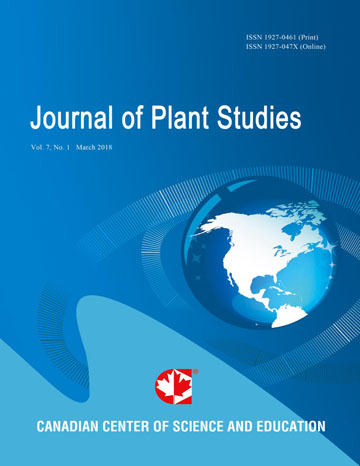Resistance and Correlation of Pod Shattering and Selected Agronomic Traits in Soybeans
- Richard Katembo Kataliko
- Paul M. Kimani
- James W. Muthomi
- Wothaya S. Wanderi
- Florence M. Olubayo
- Felister M. Nzuve
Abstract
Pod shattering is a serious production constraint that causes 34 to 99% seed losses in soybean. Identification, development and utilization of varieties with resistance to pod shattering can reduce yield losses. However, there is limited information on genetic variability of this trait in local germplasm. Twenty soybean genotypes were evaluated at KALRO-Embu and KALRO-Mwea Research Centers, in Eastern and Central highlands of Kenya during the 2016 short and long rain seasons in an alpha lattice design arranged in a 4 x 5 pattern with three replicates. Data was collected on maturity, plant height, biomass, number of seeds per pod, pod shattering and grain yield and analyzed using Genstat software (15th edition). Pearson’s correlation estimates for pod shattering and agronomic traits was done using Statistix-8 statistical package. Results showed significant interactions between genotypes, sites and seasons for days to maturity, plant biomass and pod shattering. Seasonal and location effects were significant for all the traits measured except for plant height, grain yield and pod shattering. Genotype effects showed significances for all the traits. Results showed 17.87% of soybean pod shattering in Embu and 17.41% in Mwea; 16.58% during the long rains and 18.77% during the short rains. Based on their scores, ten genotypes were classified as resistant, seven as moderately resistant, one as moderately susceptible and two as highly susceptible. Genotypes SB-8 followed by Gazelle, SB-74, SB-4, Nyala and SB-20 were the most resistant. SB-93 and SB-25 were the most susceptible genotypes. Three varieties (931/5/34, 915/5/12 and SB-154) performed well with grain yields of up to 1800 kg ha-1. The study found that pod shattering resistance was negatively correlated with number of seeds per pod (r=-0.13*). Plant with few seeds per pod tended to have high resistance to pod shattering. The resistant genotypes can be utilized for production and in effective breeding programs.
- Full Text:
 PDF
PDF
- DOI:10.5539/jps.v8n2p39
Index
- AGRICOLA
- CAB Abstracts
- CABI
- CAS (American Chemical Society)
- CNKI Scholar
- Elektronische Zeitschriftenbibliothek (EZB)
- Excellence in Research for Australia (ERA)
- Google Scholar
- JournalTOCs
- Mendeley
- Open policy finder
- Scilit
- Standard Periodical Directory
- Technische Informationsbibliothek (TIB)
- WorldCat
Contact
- Joan LeeEditorial Assistant
- jps@ccsenet.org
